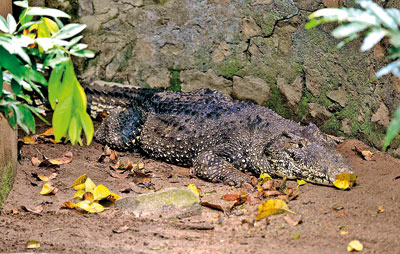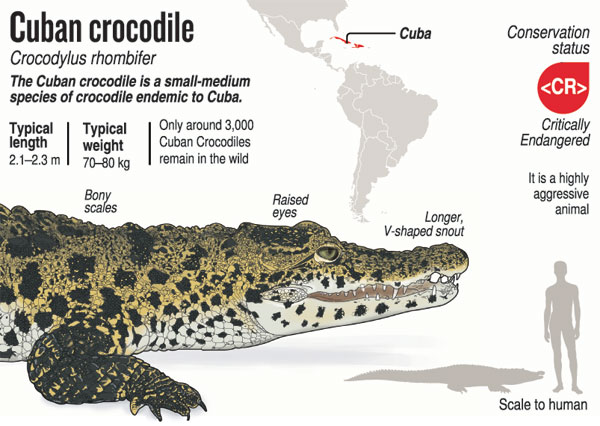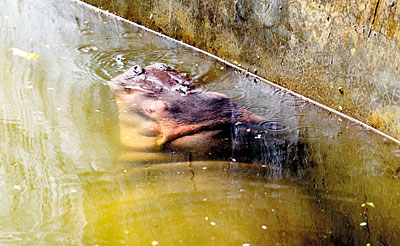News
Zoo keepers concerned over visitor- behaviour towards ‘Cuban’ the old croc
View(s):By Kasun Warakapitiya
“Cuban” is a favourite among workers at the Dehiwala zoo. She is believed to be the zoo’s oldest crocodile and they want visitors to stop throwing things at her to elicit a reaction—because enough is enough.
The most common items to land on Cuban are plastic bottles and coins. The Sunday Times observed coins glinting around her and others in the crocodile pond located in one corner of their pen. Zoo employees complain they have a difficult time removing these from the water and also getting rid of plastic bottles, particularly from the vicinity of Cuban.

Plea from the zoo: Leave Cuban the 50-year-old croc alone. Pix by Indika Handuwala
“Cuban is like a grumpy old lady,” said Sumedha Abeysinghe, Curator of the Dehiwala Zoological Garden’s Aquarium and Reptilium. “She has poor vision. However, she is also one of the most aggressive crocodiles at the zoo, in addition to being eight feet long and weighing around 70kg.”
Mr Abeysinghe was “very unhappy” over the behaviour of some visitors who want to annoy the crocodiles so they can get a reaction from the usually motionless creatures. He has even seen people toss coins into Cuban’s mouth when she leaves it open to regulate body temperature while sunbathing.
“These reptiles are carnivores and they feed on fish, turtles and small mammals,” he warned. “They cannot digest plastic or metal. It might be fun to see it move but your actions might kill the crocodile.”
Cuban is usually fed five to six kilos of beef and chicken every 10 to 12 days and occasionally Tilapia fish.
Cuban is a Cuban crocodile–Crocodylus rhombifer and is believed to be around 50-years-old. She was brought to Sri Lanka on a cargo ship and reared by a man who handed her over to the zoo in the early 1980s, according to available records. She’s been there ever since and is the zoo’s only Cuban crocodile (there are no males).

Sumedha Abeysinghe
There is, however, no paperwork related to the owner, said Mr Abeysinghe. He is believed to have kept wild animals as pets.
Cuban crocodiles are considered to be more terrestrial and aggressive than other species of crocodile and are potentially dangerous to humans. The species is listed as critically endangered by the International Union for Conservation of Nature (IUCN). Its numbers have dwindled greatly owing to hunting. Cuban crocodiles are now mostly found in the Zapata Swamp and Isla de la Juventud. The reptiles live in freshwater environments like rivers and marshes.
“Cuban is old now and there is slim chance of mating her,” Mr Abeysinghe said. “But our plan is to breed Cuban crocodiles in the future to contribute to species conservation.” It has been proposed to bring down two younger crocodiles under the inter-zoo animal exchange programmes.

| Milo the hippo: Name picked from suggestion box on Children’s Day The National Zoological Gardens in Dehiwala have named their two-month-old Nile hippo ‘Milo’ on October 1, Children’s Day, this year. Milo was birthed by Nella the hippo and sired by Hubert, both of whom were received by the zoo under an inter-zoo animal exchange programme in 2012. Hippo births are rare in zoos, Mr Samaranayake said, but Dehiwala had managed to successfully breed them even earlier. “Milo is Nella’s fourth calf and was born on July 29 this year,” he said. Both mother and calf are now exhibited in the hippo area of the zoo. | |
 |
The best way to say that you found the home of your dreams is by finding it on Hitad.lk. We have listings for apartments for sale or rent in Sri Lanka, no matter what locale you're looking for! Whether you live in Colombo, Galle, Kandy, Matara, Jaffna and more - we've got them all!

